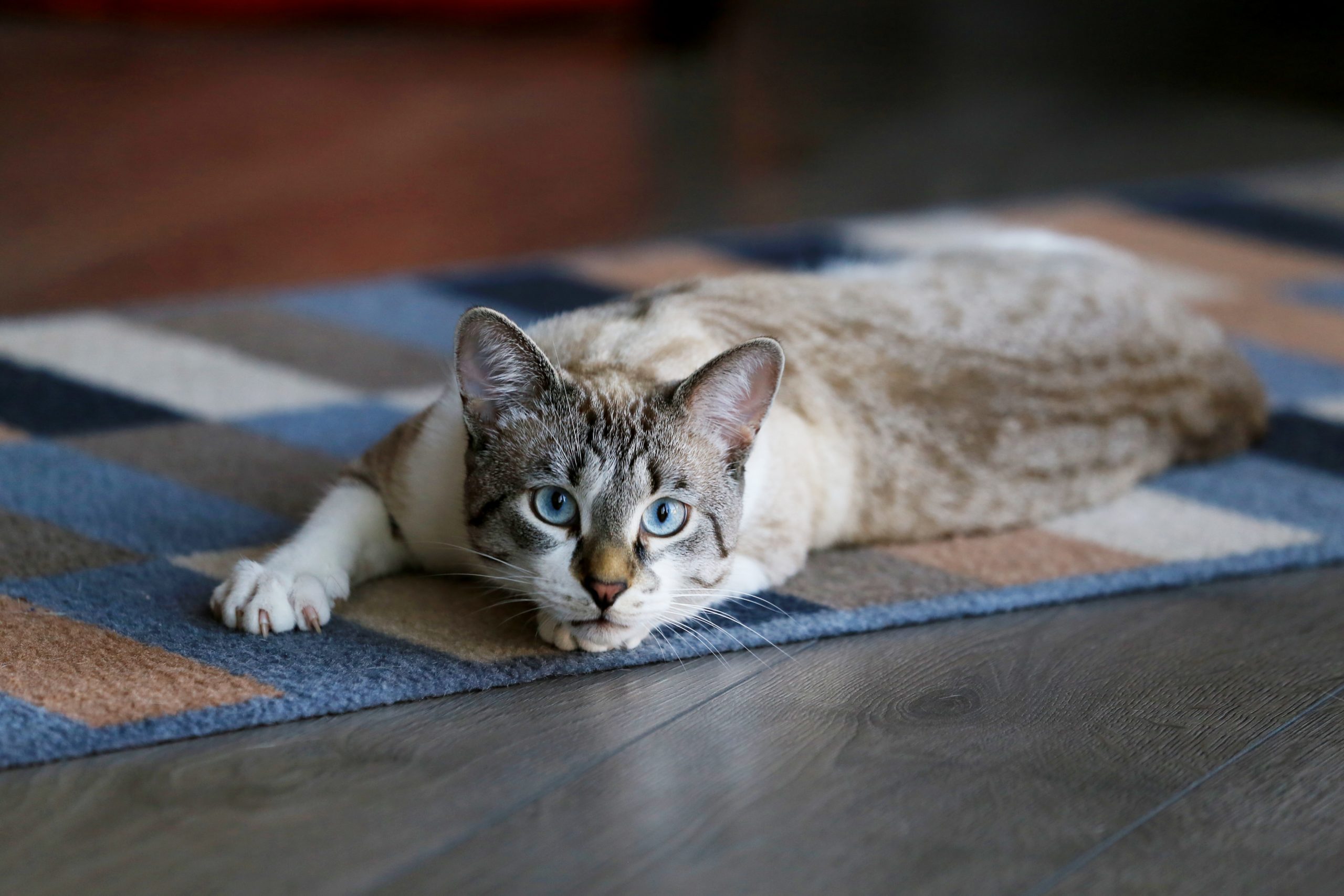It’s not always obvious that your pet has worms, and there is no way of stopping pets from getting them which is why regular treatment is so important.

Has My Pet Got Worms?
It’s not always obvious that your pet has a worm infestation, as they are too small to see. Here’s a few indicators:
- Younger animals may have a pot belly and start to lose weight if they have roundworms.
- Sometimes you can see tapewormsegments, which look like grains of rice, around their bottom.
- Lungwormsymptoms include a moist cough, weight loss, vomiting, diarrhoea, reduced appetite, nose bleeds or bleeding persistently from a small wound.
Different Types of Worms
Roundworms
Roundworms are spread by your pet eating an infected egg either from the soil or in an infected rodent, bird or rabbit. The eggs are passed in faeces and can remain in the soil anywhere where dogs or cats have been.
Tapeworms
The most common kind of tapeworm in the UK is spread by fleas. So if your pet has a flea infestation, give them a worming tablet as well as treating their fleas.
Travelling with your pet? They will need to be treated for tapeworm before they re-enter the UK.
Hookworms
These are not common in the UK but can affect your pet if you are travelling abroad. The larvae can be eaten or burrow through the skin of the animal. The adult worms hook themselves to the intestine and feed on blood. Large numbers of worms will cause anaemia.
Whipworms
Whipworms only affect dogs. They are rare in the UK but can be found where there are large numbers of dogs in places such as kennels. Whipworm eggs can be found in the faeces of infected dogs, and then passed on to other dogs through contact with the faeces. They do not cause any health problems for humans.
Lungworms
There are a number of different kinds of lung worm in both cats and dogs. The first sign of an infection is a moist cough, as part of the worm’s lifecycle is spent in the lungs and airways. They can be caught through eating a slug or snail containing the lungworm larvae. Lungworms cannot be treated by conventional worming tablets, so you should consult your vet to treat them in your pet. They may recommend using a spot on wormer during the wet, warm seasons when slugs and snails are particularly prevalent.
How Often Should I Treat My Pet?
Worming is recommended at least four times a year, although more regular treatment for worms may be required if your pet hunts, or gets fleas. Remember, there is no residual effect from treatments – so you can’t use it as a preventative.
Tips for Worming Your Pet
We know that some dogs and cats can be especially difficult to worm, so here’s the most effective methods that the pet owners here at Bob Martin have found.
- Skip a meal, so that your pet is really hungry. Try wrapping the tablet in some ham, cheese or chicken or other equally tasty treat.
- Put Bob Martin Clear Worming granules in the fridge for a day before worming as this reduces their smell. Then mix them with some warm meat or smelly sardines.
- Give your pet a small amount of their regular meal, and only offer the rest once they have had their tablet.
- For cats who are notoriously difficult to give tablets too, try our Spot On Wormer for quick and easy treatment of tapeworms.
Title: Does my cat have worms?
While worms in cats and kittens are very common, it’s not always obvious that your pet has them. There is also no way of stopping pets from getting them which is why regular treatment is so important.
Cats can potentially pick up several types of intestinal worms during their life, but the most common are roundworms, hookworms, lungworms and tapeworms.
Common causes
- Swallowing larvae from mother’s milk.
- Eating infected prey.
- Having fleas and swallowing them whilst grooming.
- Picking up worms or larvae from faeces whilst outside.
- Contact with slugs or snails (lungworm).
Tapeworms are transmitted to cats by fleas. Immature fleas (larvae) ingest the worm eggs and infection is passed on to a dog when it swallows an infected flea. This is one of the reasons why it’s important to treat your cat for fleas as well as for worms.
Roundworm larvae start by infecting a cat’s intestinal tract, but they can burrow their way into other tissues and organs.
Symptoms
- Younger animals may have a pot belly and start to lose weight if they have roundworms.
- Sometimes you can see tapeworm segments, which look like grains of rice, around their bottom.
- Lungworm symptoms include a moist cough, weight loss, vomiting, diarrhoea, reduced appetite, nose bleeds or bleeding persistently from a small wound.
Diagnosis
Your vet will give your cat a thorough examination and take a full history from you. Most healthy animals will not show any symptoms of worm infection. If you have found any worms it’s very helpful for the vet to see them so they can identify the type. If possible, scoop up some of your pet’s excrement, seal it in a clean plastic bag, and bring it to the appointment. If you can’t do that, your vet can take a sample during the visit.
Treatment options
The treatment of the condition will depend partly on the vet’s diagnosis, but worming should be done regularly regardless of symptoms as a preventive measure.
Forms of treatment that can be managed at home could involve:
- Tablets
- Powders
- Pastes
- Spot-on treatments
We know that some dogs and cats can be especially difficult to worm, so here’s the most effective methods that the pet owners here at Bob Martin have found.
- Skip a meal, so that your pet is really hungry. Try wrapping the tablet in some ham, cheese or chicken or other equally tasty treat.
- Put Bob Martin Clear Worming granules in the fridge for a day before worming as this reduces their smell. Then mix them with some warm meat or smelly sardines.
- Give your pet a small amount of their regular meal, and only offer the rest once they have had their tablet.
- For cats who are notoriously difficult to give tablets too, try our Spot On Wormer for quick and easy treatment of tapeworms.
Prevention
You need to worm your cat regularly even if you haven’t seen any symptoms of worms, to kill the worms that are present and prevent reinfection.
Worming is recommended at least four times a year, although more regular treatment for worms may be required if your pet hunts, or gets fleas. Remember, there is no residual effect from treatments – so you can’t use it as a preventative.
Exercising good hygiene precautions is very important, particularly with children, who should be taught not to share food plates with the cat and to wash their hands after stroking or playing with him or her. Provided you worm your cat regularly, any risks should be kept to a minimum.
Products which treat and prevent
Bob Martin Clear is a range of pet care products that have been designed to keep your pet happy, healthy and free from fleas, ticks and worms. It includes treatments for cats, dogs and the home with a range of active ingredients including our pesticide-free products.
To treat worms, try products from the Clear Plus or Clear Blue range. Bob Martin Spot On Dewormer for Cats can be used to treat tapeworm, while Bob Martin Clear Wormer Tablets for Cats works for tapeworm and roundworm.
To help prevent worms, try products from the Clear Prevention range. These products are used throughout the year in prevention. Our non-insecticidal repellent range is made with Margosa extract and Lavandin Oil, used to push back fleas and ticks, which can lead to worms. The range includes flea shampoo, spot on, flea and tick collars and flea and tick spray for your pet and home.
